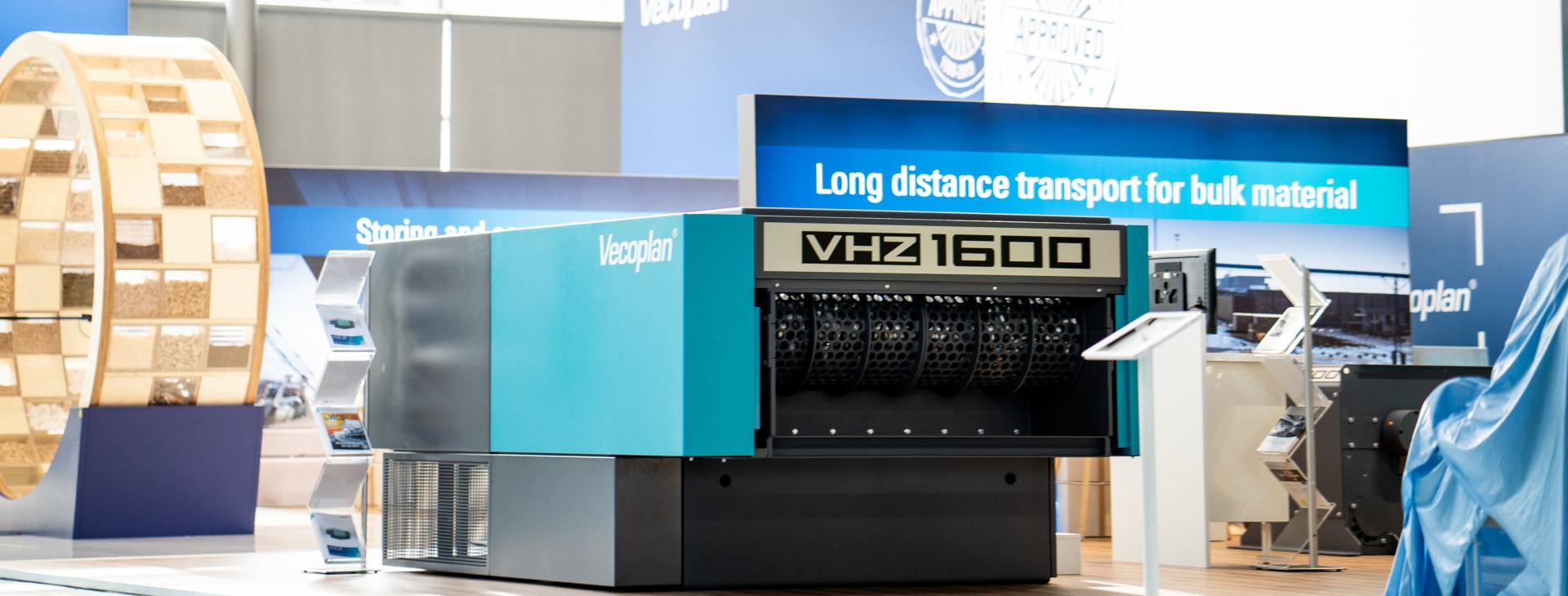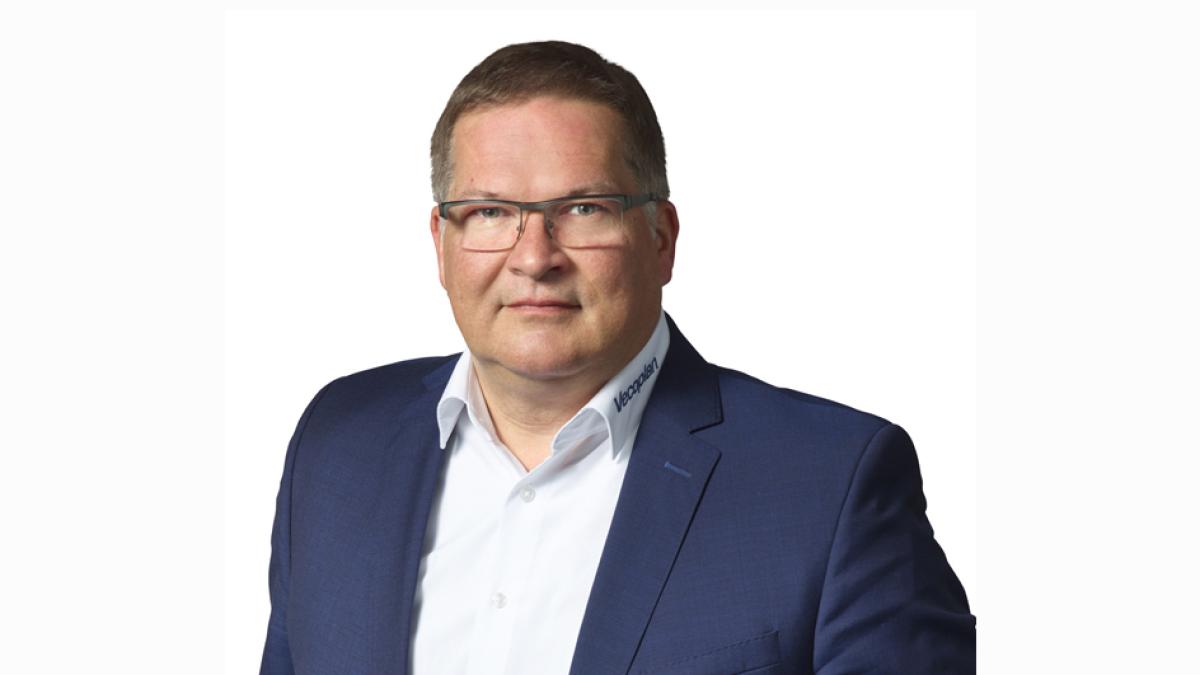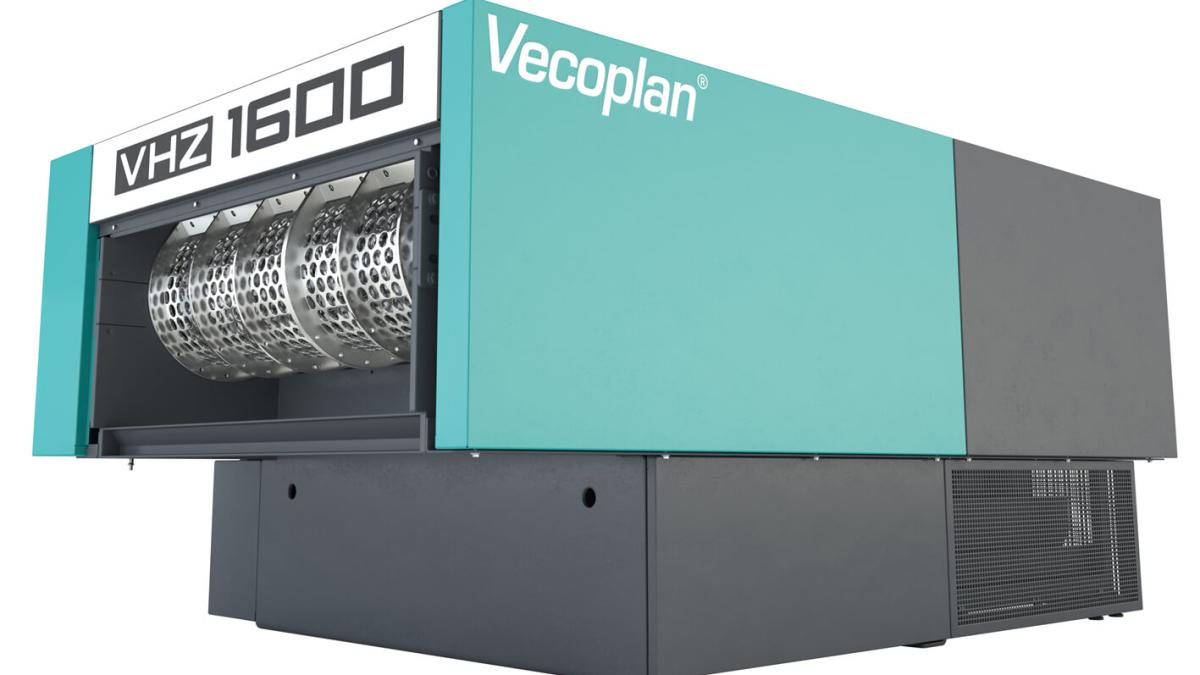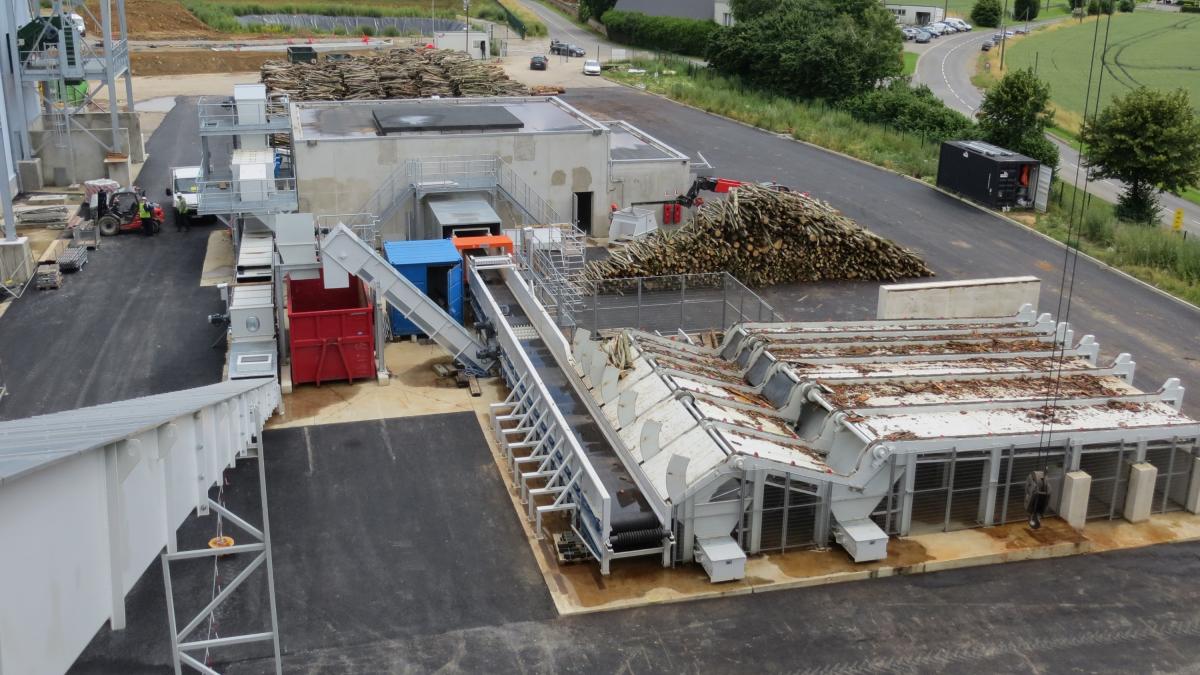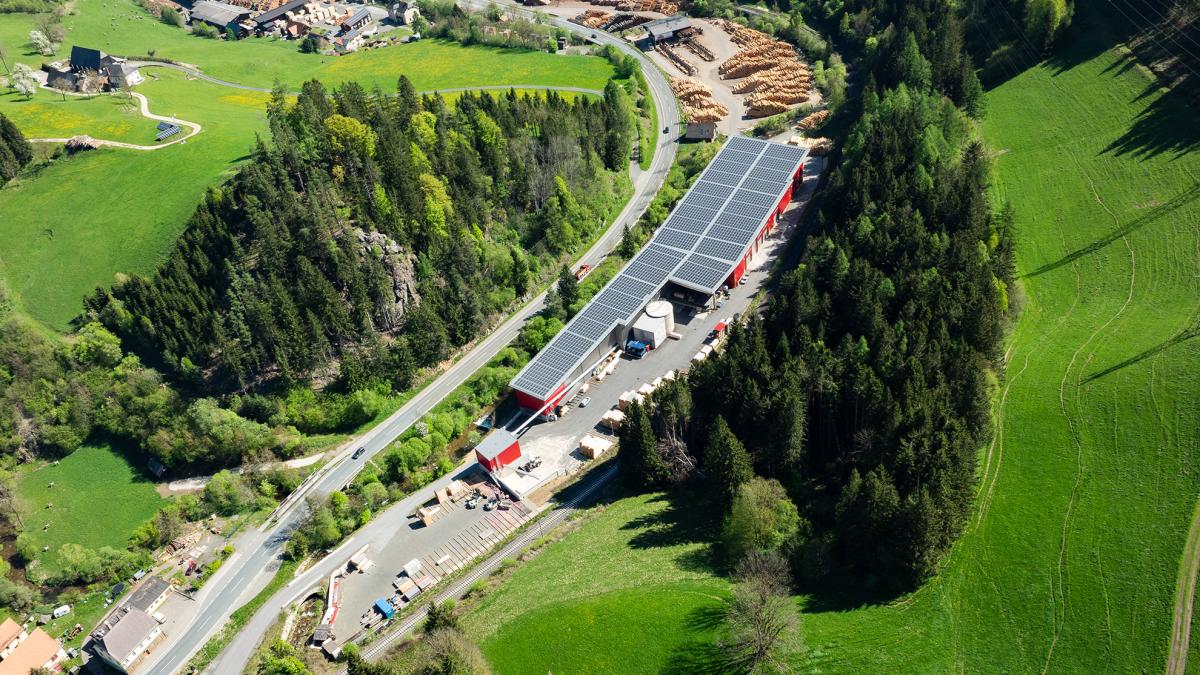Mr. Müller, you celebrated the premiere of the new VHZ 1600 wood shredder at the LIGNA. What is special about this machine?
Dirk Müller: The VHZ 1600 is the big brother of the extremely compact VHZ 800-1100 single-shaft shredder series that we presented at the LIGNA 2017. With this durable and robust series, manufacturers of laminate, parquet and prefabricated houses, carpenters, the panel industry and even manufacturers of laminated beams, pallets, boxes and packaging material can process wood leftovers reliably. One outstanding feature of single-shaft shredders is that they do not require additional feeding systems for most applications. Plant operators can simply put collected materials into the machine without the need for any dosing. The hydraulically powered ram feeds this quickly and easily into the shredding mechanism. Our new machine is also equipped with the energy-efficient and economical ESC Drive. ESC is the abbreviation for Electronic Slip Control. The machine also has an optimised cutting unit. And the VHZ 1600 is also compact and versatile.
How will users specifically benefit from this?
Dirk Müller: One big plus of our VHZ is its very good ratio of operating costs and benefits. The energy efficiency of our ESC drive makes an important contribution to this excellent ratio – it enables us to offer an energy-saving shredder with a correspondingly high throughput. Customers can use it to process chipboard, hard and soft wood waste and even bark more economically. We also implemented this new development in our current product design, constantly focusing on the added value for the customer. This makes the new shredder easier for the operator to handle. The service and maintenance accessibility of the machine’s components has also been significantly improved.
Can you name the advantages of the ESC drive?
Dirk Müller: This drive technology is energy-efficient, cost-effective and economical. There’s no need for gearboxes and turbo couplings and this enables us to achieve a high degree of efficiency. The multi-pole, asynchronous drive motor with its powerful frequency converter acts on the rotor shaft via a special belt drive. The sophisticated drive-slip control also offers operators the detection of impurities with a fast-reacting and effective rotor brake – so expensive damage caused by foreign bodies is virtually excluded. Used together with our proven start-up and reversing controller, 2 to 2.5 times drive torque can be achieved in just a short time with this combination, eliminating current peaks that would burden the operating network. This is an important requirement for rapid, high-torque start-up and stable operation, particularly in the case of shredders.
For which applications is your new development suitable?
Dirk Müller: The VHZ 1600 is suitable for classic industrial applications in the secondary segment. It has been designed to accept larger input quantities than the smaller series. For example, the companies also process crosscut wood and pieces as well as bark in order to use the output for thermal or material purposes.
Processing instead of disposal – how much potential does this market hold?
Dirk Müller: Wood is a very good source of energy. And wood processors in particular often have to produce energy-intensively – drying kilns, for example, require a lot of heat. Wood leftovers are perfect for generating energy, but the pieces must first be processed to achieve the necessary degree of homogeneity. In addition to the shredders, the right conveying and storage technology is also necessary, because the biomass must be continuously fed into the boiler. This market has developed rapidly, especially in Germany and Central Europe. However, other countries still have some catching up to do. In recent years we have been able to supply a relatively large number of plants to England and France. The market is also growing very strongly in Eastern Europe, where I can see an enormous amount of potential.
What requirements do your customers place on processing technology today?
Dirk Müller: Our customers demand increasingly higher throughput rates. They also want rugged systems that can handle a lot of continuous operation, so availability plays an increasingly important role as well. Biomass is very inhomogeneous and it also contains various impurities, such as small stones, glass and even nails – and this places high demands on shredding technology. If a shredding machine fails because the cutters have to be changed, for example, everything comes to a halt – and a plant that’s at a standstill is expensive. This is why we design our systems in such a way that they can continuously feed the users’ boilers with biomass.
Can you always guarantee the desired level of energy efficiency?
Dirk Müller: I have a good example to answer your question: The operator of a biomass heat & power plant wanted it stipulated in the contract that we would have to pay a contractual penalty of €5,000 for any additional consumption of 15 kilowatt hours or more. We turned the whole thing around and asked, “OK, but if we stay below this defined level, what do we get? We then claimed the same value for ourselves. We’re currently getting a premium from the customer because the energy consumption is correspondingly low. That company will be operating its biomass heat & power plant for the next 15 or 20 years, or even longer – and assuming that it had 15 kilowatt hours additional consumption and we added the costs incurred for processing throughout the entire life of the plant, the value would become exorbitantly high. That’s why our declared ambition is to develop plants with a secure and low level of energy consumption, coupled with a long service life.
In terms of these requirements, are you setting a trend with the VHZ 1600?
Dirk Müller: Absolutely. We developed the VHZ 1600 with a focus on energy efficiency. That’s a very clear demand from the market. Users want to achieve the same or even more performance with less energy. Of course, we always consider the manufacturing and service costs that can be incurred by the customer – because the user has to regularly change the oil and seals on every machine. And there are also efficiency losses to contend with. The more components I can do without, like gearboxes and couplings, the higher the efficiency level will be – and I believe we’ve implemented these concepts into our new shredder very successfully. Our VHZ 1600 is also controlled by a frequency converter, so the speed range of the drive is infinitely adjustable and network peaks are eliminated.
Vecoplan at Ligna 2019
The Ligna 2019 in Hanover was a complete success for Vecoplan! See here some impressions from a total of 5 days at the fair.
